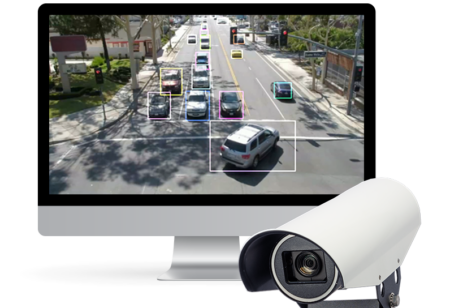A professor in the University of Nevada at Reno’s (UNR) civil and environmental engineering department has developed a new transportation simulation system that will help its home city better manage the road network through better signal timing.
Working jointly with the Beijing Institute of Technology in China, Professor Zong Tian has overseen the architectural design for the UNR’s Physical Arterial Signal Simulation (PASS) system, a state-of-the-art traffic simulator specific to the Reno area, and the only system of its kind in a North American university.
With the PASS system allowing Tian and UNR students to create traffic simulations quickly and effectively, Reno drivers will see future benefits from the outcome of the research.
The PASS system enables students to develop optimized coordination timing plans for traffic signals around the Reno area. They can then program the timing plans into standard NEMA (National Electronic Manufacturers Association) controllers and transfer that information to the National Transportation Communications for Intelligent Transportation System Protocol (NTCIP), which is part of a wider national government effort to develop intelligent transportation system (ITS) standards. As a result of the Chinese partnership, two other systems of this type have been built and implemented at Tianjin Chengjian University and Lanzhou Jiaotong University.
“Signal re-timing is considered one of the most cost-effective traffic management strategies,” explained Tian, who is also the director of the Center for Advanced Transportation Education and Research and the SOLARIS University Transportation Center.
“For both personal vehicles and public transportation, well-timed signals mean reduced stops, which reduces travel delays and back-ups and lowers fuel consumption and vehicle emissions. One of the first intersections we studied was on North McCarran Boulevard along Clearacre Lane and US 395, and we’ve found that the general benefit-cost ratio ranges between 30:1 to 300:1. So this system can help us create a very real and very tangible difference.”
Tian continued, “PASS is a lab facility for teaching traffic signal control and timing development. The system is able to display traffic progression either through computer simulation or through the physical arterial model, providing near real-signal operations and visualizations. It essentially helps us learn how to make the streets and highways of Reno more cost-effective and manageable. The system eliminates the need for hardware controller interface devices, meaning it’s easier and quicker for us to see how the information from the NEMA controllers affects NTCIP standards with our simulations, both computerized and physical.”
Tian concluded, “Beyond its effect on the way commuters experience traffic and signaling, the PASS system is also helping to build the future of transportation engineering and research at the university. Because the system uses simulated traffic but real NEMA signal controllers, students can learn how signal control is implemented in the real world. The animation and scale model provide very real traffic signal operations and visualization, which makes it much easier to explain the basic concepts, by visualizing the connections between timing design and actual signal operations.”
Manos Maragakis, dean of the UNR’s College of Engineering, noted, “The PASS System exemplifies our efforts on improving the operation and efficiency of the infrastructure of Nevada, and the nation, and demonstrates our commitment and success in this important aspect of our mission.”




